| Weight | 1 lbs |
|---|---|
| Dimensions | 9 × 5 × 2 in |
| host | mouse |
| isotype | IgG1 |
| clonality | monoclonal |
| concentration | concentrate, predilute |
| applications | IHC |
| reactivity | human |
| available size | 0.1 mL, 0.5 mL, 1 mL concentrated, 7 mL prediluted |
mouse anti-Cytokeratin 8 monoclonal antibody (ZM123) 6151
Price range: $160.00 through $528.00
Antibody summary
- Mouse monoclonal to Cytokeratin 8
- Suitable for: Immunohistochemistry (formalin-fixed, paraffin-embedded tissues)
- Reacts with: Human
- Isotype:IgG1
- Control: Breast carcinoma
- Visualization: Cytoplasmic
- 0.1, 0.5, 1.0 mL concentrated, 7 mL prediluted
mouse anti-Cytokeratin 8 monoclonal antibody ZM123 6151
| target relevance |
|---|
| Protein names Keratin, type II cytoskeletal 8 (Cytokeratin-8) (CK-8) (Keratin-8) (K8) (Type-II keratin Kb8) |
| Gene names KRT8,KRT8 CYK8 |
| Protein family Intermediate filament family |
| Mass 53704Da |
| Function FUNCTION: Together with KRT19, helps to link the contractile apparatus to dystrophin at the costameres of striated muscle. {ECO:0000269|PubMed:16000376}. |
| Subellular location SUBCELLULAR LOCATION: Cytoplasm {ECO:0000269|PubMed:10973561, ECO:0000269|PubMed:19188445}. Nucleus, nucleoplasm {ECO:0000250|UniProtKB:Q10758}. Nucleus matrix {ECO:0000250|UniProtKB:Q10758}. |
| Tissues TISSUE SPECIFICITY: Observed in muscle fibers accumulating in the costameres of myoplasm at the sarcolemma membrane in structures that contain dystrophin and spectrin. Expressed in gingival mucosa and hard palate of the oral cavity. {ECO:0000269|PubMed:10973561, ECO:0000269|PubMed:16000376}. |
| Structure SUBUNIT: Heterotetramer of two type I and two type II keratins (PubMed:16000376). Forms a heterodimer with KRT18 (PubMed:10852826, PubMed:24940650). Associates with KRT20 (PubMed:10973561, PubMed:16608857). Interacts with PLEC isoform 1C, when in a heterodimer with KRT18 (PubMed:24940650). Interacts with PNN (PubMed:10809736). When associated with KRT19, interacts with DMD. Interacts with TCHP (PubMed:15731013). Interacts with APEX1 (PubMed:19188445). Interacts with GPER1 (PubMed:21149639). Interacts with EPPK1 (By similarity). Interacts with PKP1 and PKP2 (PubMed:10852826). {ECO:0000250|UniProtKB:P11679, ECO:0000269|PubMed:10809736, ECO:0000269|PubMed:10852826, ECO:0000269|PubMed:10973561, ECO:0000269|PubMed:15731013, ECO:0000269|PubMed:16000376, ECO:0000269|PubMed:16608857, ECO:0000269|PubMed:19188445, ECO:0000269|PubMed:21149639, ECO:0000269|PubMed:24940650}.; SUBUNIT: (Microbial infection) Interacts with hepatitis C virus/HCV core protein. {ECO:0000269|PubMed:15846844}. |
| Post-translational modification PTM: Phosphorylation on serine residues is enhanced during EGF stimulation and mitosis. Ser-74 phosphorylation plays an important role in keratin filament reorganization. {ECO:0000269|PubMed:11781324, ECO:0000269|PubMed:11788583, ECO:0000269|PubMed:1374067, ECO:0000269|PubMed:9054461}.; PTM: O-glycosylated. O-GlcNAcylation at multiple sites increases solubility, and decreases stability by inducing proteasomal degradation.; PTM: O-glycosylated (O-GlcNAcylated), in a cell cycle-dependent manner. |
| Involvement in disease DISEASE: Cirrhosis (CIRRH) [MIM:215600]: A liver disease characterized by severe panlobular liver-cell swelling with Mallory body formation, prominent pericellular fibrosis, and marked deposits of copper. Clinical features include abdomen swelling, jaundice and pulmonary hypertension. {ECO:0000269|PubMed:12724528}. Note=The disease is caused by variants affecting the gene represented in this entry. |
| Target Relevance information above includes information from UniProt accession: P05787 |
| The UniProt Consortium |
Data
 |
| Human basal cell carcinoma stained with anti-keratin 8 antibody using peroxidase-conjugate and DAB chromogen. Note the cytoplasmic staining of tumor cells. |
Publications
| pmid | title | authors | citation |
|---|---|---|---|
| We haven't added any publications to our database yet. | |||
Protocols
| relevant to this product |
|---|
| IHC |
Documents
| # | SDS | Certificate | |
|---|---|---|---|
| Please enter your product and batch number here to retrieve product datasheet, SDS, and QC information. | |||
Only logged in customers who have purchased this product may leave a review.
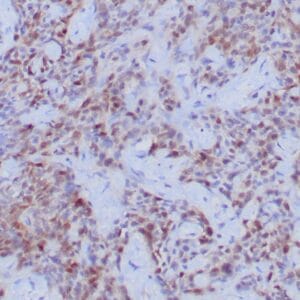
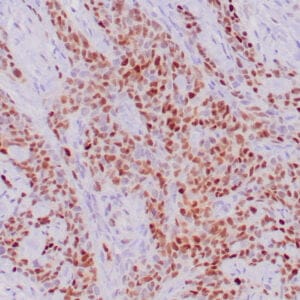
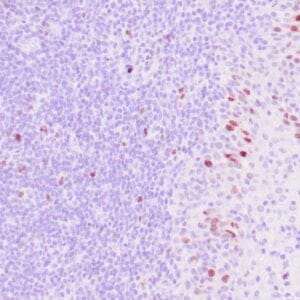
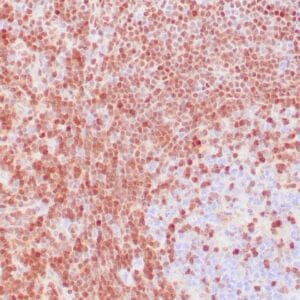
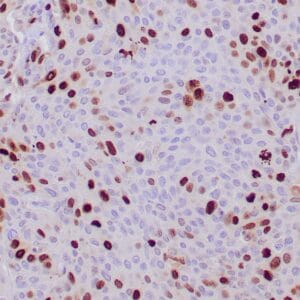
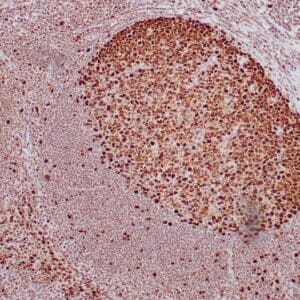

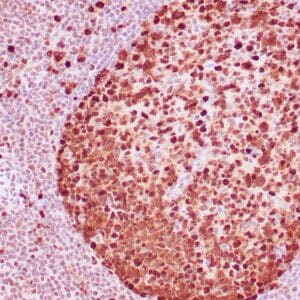
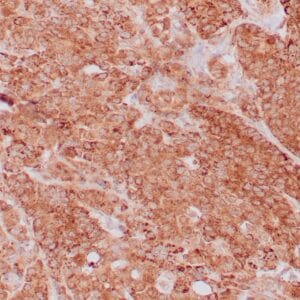


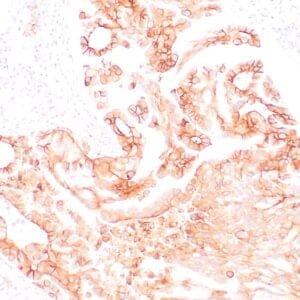
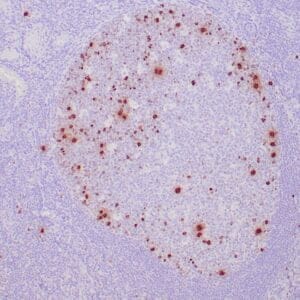

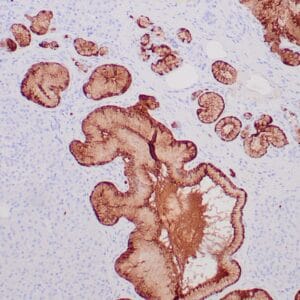
Reviews
There are no reviews yet.